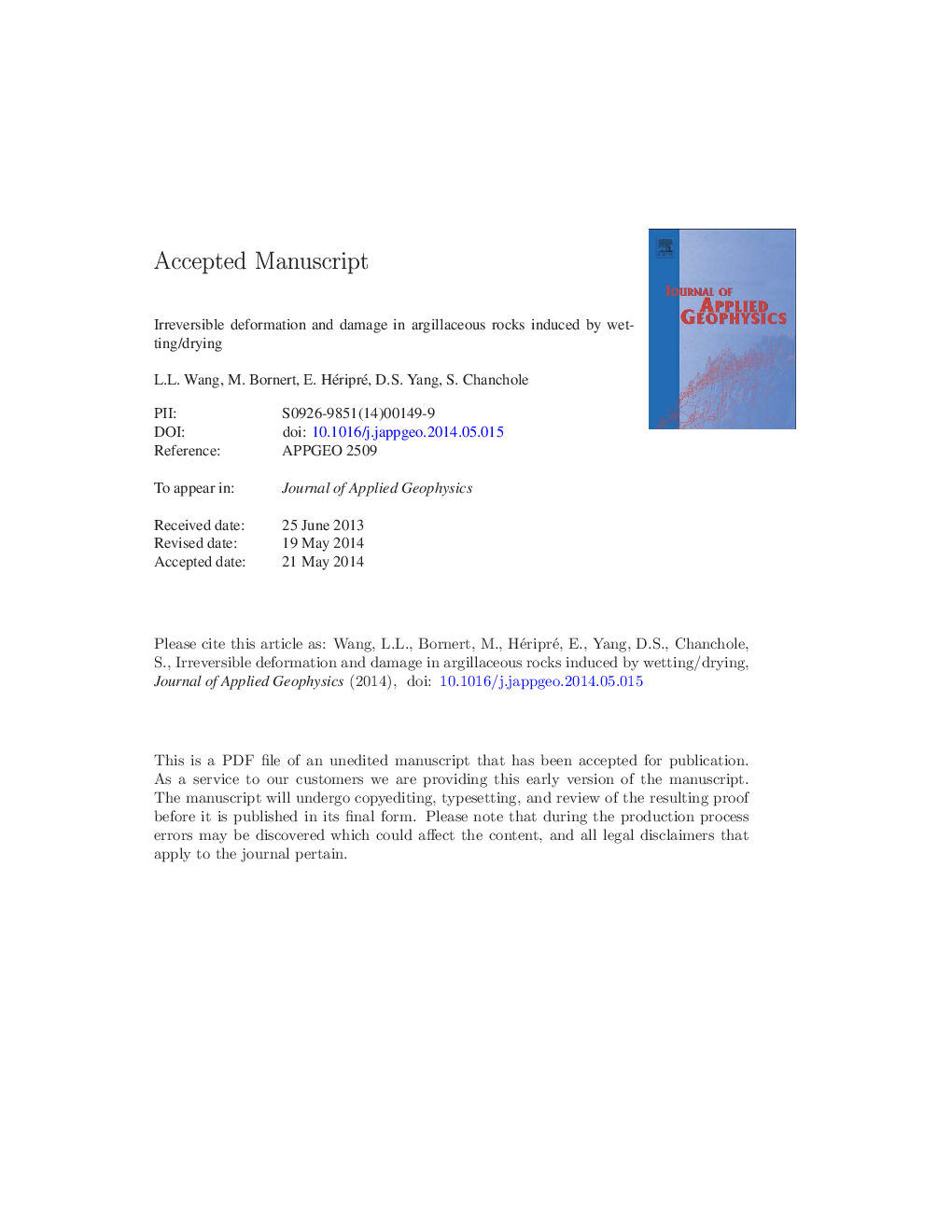| Article ID | Journal | Published Year | Pages | File Type |
|---|---|---|---|---|
| 6447282 | Journal of Applied Geophysics | 2014 | 44 Pages |
Abstract
Some irreversible phenomena of argillaceous rocks during wetting and drying processes are experimentally investigated at the micrometric scale, by combining environmental scanning electron microscope (ESEM) imaging and digital image correlation (DIC) techniques. According to previous macroscopic experimental results, argillaceous rocks under a free wetting-drying cycle usually exhibit a reversible deformation; however, the microscopic observation of this work evidences several irreversible phenomena. Some irreversible deformations located in clay matrix are observed and their mechanisms are identified. Some local damage phenomena, in the form of a network of micro-cracks typically with ~ 1 μm openings, are also observed in both the wetting and drying cases: the former locates in the bulk of clay matrix and/or at inclusion-matrix interfaces, whereas the latter is mostly found in the bulk of clay matrix. The two types of micro-cracks are activated by different mechanisms, and their morphology and extension have been evidenced to be strongly dependent on the wetting or drying rate. All these irreversible phenomena are localized and sometimes counteracted each other, leading the macroscopic deformation to be apparently reversible. Nevertheless, they are of crucial importance for the reliability of long-term storage.
Keywords
Related Topics
Physical Sciences and Engineering
Earth and Planetary Sciences
Geophysics
Authors
L.L. Wang, M. Bornert, E. Héripré, D.S. Yang, S. Chanchole,
